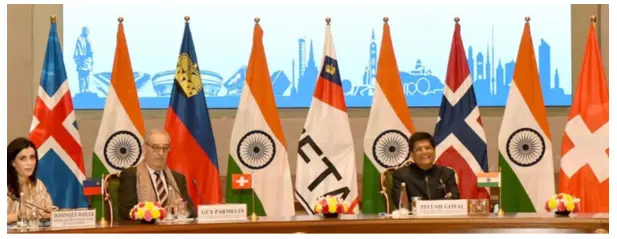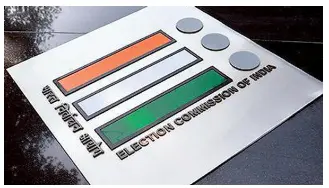Wednesday, 29th May 2024
Rising Heat Stress in Six Major Indian Cities
In News: A study by the Delhi-based Centre for Science and Environment reveals that India's megacities—Delhi, Mumbai, Chennai, Bengaluru, Kolkata, and Hyderabad—are facing increasing heat stress due to rising relative humidity over the past two decades. Additionally, these cities are experiencing warmer nights attributed to the urban heat island effect.

What is Heat Stress?
- About
- Heat stress occurs when the body cannot effectively dissipate excess heat, leading to a rise in core body temperature and increased heart rate.
- It refers to the physiological strain experienced in high-temperature environments.
- Causes
- High ambient temperatures
- High humidity levels, which hinder the body’s ability to cool through sweating
- Physical exertion in hot conditions
- Inadequate hydration
- Poor ventilation in workspaces or living environments
- Symptoms
- Initial symptoms include loss of concentration, irritability, sickness, and decreased desire to drink.
- If untreated, it can progress to fainting and even death as the body continues to store heat.
What is the Urban Heat Island (UHI) Effect?
- About
- The UHI effect is a phenomenon where urban areas are significantly warmer than their rural surroundings due to human activities and urban characteristics.

- Causes
- Surface Characteristics: Urban areas have more heat-absorbing materials like asphalt and concrete.
- Heat Generated by Human Activities: Industrial processes, vehicles, and air conditioning units contribute to increased heat.
- Reduced Vegetation: Less green space leads to less natural cooling through evapotranspiration.
- Building Density: Tall buildings and narrow streets trap heat and reduce airflow.
- Waste Heat: Energy consumption for lighting, heating, and cooling releases additional heat.
- Mitigation Strategies
- Increased Vegetation: Planting trees and creating green spaces to provide shade and cooling.
- Cool Roofs and Pavements: Using materials that reflect more sunlight and absorb less heat.
- Green Roofs: Installing vegetation on rooftops to provide insulation and reduce heat absorption.
- Urban Planning: Designing cities with more parks, green belts, and open spaces to improve airflow.
- Energy Efficiency: Enhancing the energy efficiency of buildings to reduce heat generation.
Key Highlights of the Study
- Megacities Experiencing Worsening Heat Stress
- India's megacities like Delhi, Mumbai, Chennai, Bengaluru, Kolkata, and Hyderabad are facing increasing heat stress due to rising relative humidity over the past two decades.
- Except for Bengaluru, all other cities have seen a 5-10% rise in average relative humidity during summer.
- Impact of High Heat and Humidity on the Human Body
- High heat and humidity compromise the body's cooling mechanism (sweating). Higher humidity limits sweat evaporation, leading to sickness and potentially fatal conditions even at lower temperatures.
- Urban Heat Island Effect Impacting Night Temperature
- Cities are experiencing warmer nights as land surface temperatures do not drop as they did a decade ago. This is attributed to the UHI effect.
- Warmer nights are as dangerous as peak daytime temperatures, providing little relief from daytime heat.
- Factors Leading to Increase in Heat Index and Heat Stress
- Rising air and land surface temperatures combined with high relative humidity increase the heat index and heat stress in these cities.
- The heat index measures discomfort due to high heat and humidity.
- Monsoon Period Has Become Hotter
- The monsoon period is hotter in Delhi, Mumbai, and Kolkata, while Chennai has lost its marginal cooling effect. Bengaluru and Hyderabad still experience slightly cooler monsoons than the pre-monsoon period.
Importance of This Study
- To Develop a Comprehensive Heat Management Plan for Urban Centres
- Assessing heat trends is necessary to create effective heat management plans for urban areas.
- To Protect Public Health
- This study will help implement emergency measures during heatwaves to safeguard public health.
- To Develop Longer Term Strategies to Mitigate Heat
- Strategies include increasing green areas and water bodies, improving thermal comfort in buildings, and reducing waste heat from vehicles, air conditioners, and industries.
Source: IE
Rising Debt Strains Household Savings
In News: Recently, there has been a debate regarding the significant decline in the Household Net Financial Savings to GDP ratio during 2022-23, attributed to a higher Borrowing to GDP ratio.

Current Changes in the Saving Pattern
Increased Borrowing and Asset Stagnation
- There has been a significant rise in borrowing by 2.5 percentage points, leading to reduced net financial savings by 2.0 percentage points.
- Physical savings and investment have seen only a marginal increase of 0.3 percentage points.
- This contradicts the government’s view that increased borrowing has led to higher physical savings.
- The household savings to GDP ratio has declined by 1.7 percentage points, while the gold savings to GDP ratio has remained largely unchanged.
Decline in Household Financial Wealth to GDP Ratio
- Households are becoming poorer relative to the overall economy and are borrowing more money.
- The ratio of household financial wealth to GDP has fallen sharply, and the debt-to-net-worth ratio has risen.
Rise in Interest Payment Burden
- The interest payment burden is influenced by both the interest rate and the debt-to-income (DTI) ratio.
- A higher DTI ratio indicates a higher risk of defaulting on loans.
- There has been a sharp rise in both DTI and interest payment burdens recently.
- The DTI ratio can increase due to higher net borrowing-income ratios or higher interest rates/reduced nominal income growth rates.
- Fisher dynamics describe the phenomenon of a rising debt-to-income ratio due to changes in interest rates and nominal income growth rates.
Household Income Growth Lags Behind Lending Rate
- From 2019-20 to 2022-23, the average growth rate of household disposable income (8% in 2019-20 to 2021-22 and 9.3% in 2019-20 to 2022-23) was lower than the weighted average lending rate (9.3% in 2019-22 and 9.4% in 2019-23).
- The lending rate figures are derived from the Reserve Bank of India’s quarterly data.
Decline in Savings and Investment (2003-08 vs. 2019-22)
- From 2003-04 to 2007-08, the average Gross National Income (GNI) growth rate (14.5%) was higher than the average lending rate (11.5%).
- This indicated that incomes were growing faster than the cost of borrowing.
Fisher Dynamics Since 2019-20
- The Indian economy has shown signs of Fisher dynamics since the economic slowdown in 2019-20.
- Post-Covid-19, household debt has increased sharply compared to income, primarily due to lower nominal income growth rates.
- Two main challenges arise from Fisher dynamics:
- Increasing Income-Debt Gap: Leading to higher interest payments for households.
- Reduced Consumption: Higher debt prompts households to cut back on spending, reflected in the drop in the consumption to GDP ratio in 2023-24.
Macroeconomic Implications of Rising Household Debt Burden
- Debt Repayment: Rising interest rates faster than income growth can strain the financial sector, reducing credit availability for businesses.
- Consumption Demand: High household debt can reduce consumption as households save more and spend less.
- Higher Interest Rates to Combat Inflation: This can worsen household debt burdens and push households into a debt trap.
- Financialisation of the Economy: The shift towards financial assets indicates a more financialised economy, potentially making it more fragile and prone to crises.
Way Forward
- Focus on Income Growth and Debt Control: Reducing the gap between interest rates and income growth is crucial, as is slowing down the growth of household debt compared to income.
- Boosting Income Growth: Policies promoting job creation, wage increases, and overall economic growth are essential.
- Managing Debt Levels: Encouraging responsible borrowing practices and potentially regulating excessively high lending rates can help households manage debt more effectively.
- Wage Growth: If wages grow faster than interest rates, households will have more disposable income to manage debt and spend more.
- Debt Management Strategies: Financial education initiatives and responsible lending practices can help households manage debt better, freeing up income for spending.
|
UPSC Previous Year Questions Prelims (2018) Q. As per the NSSO 70th Round “Situation Assessment Survey of Agricultural Households”, consider the following statements:
Which of the statements given above is/are correct? (a) 2 and 3 only Ans: c Prelims (2019) 2. In a given year in India, official poverty lines are higher in some States than in others because (a) poverty rates vary from State to State Ans: (b) |
Source: TH
Political and Economic Reforms in 1991
In News: As India prepares for the 2024 general election, it's crucial to reflect on the pivotal 1991 Indian general elections, a significant turning point in the nation's history.
Key Electoral Reforms Introduced by T. N. Seshan
- Overview
- Tirunellai Narayana Iyer Seshan, commonly known as T. N. Seshan, served as the Chief Election Commissioner (CEC) of India from 1990 to 1996.
- During his tenure, he introduced several landmark reforms that profoundly transformed the Indian electoral process.
- Key Reforms
- Voter ID Cards
- Introduction: Known as Electors Photo Identity Card (EPIC), these were introduced to prevent impersonation and bogus voting.
- Strict Enforcement of Model Code of Conduct (MCC)
- Enforcement: Seshan rigorously enforced the MCC, which outlines guidelines for political parties during elections. This curbed the misuse of power and unfair advantages.
- Curbing Electoral Malpractices
- Measures: Under his leadership, the Election Commission listed 150 malpractices, including vote buying, bribing, intimidation of voters, booth capturing, and the use of muscle power.
- Restrictions: He also banned excessive spending and public displays during campaigns.
- Ensuring Independent and Impartial Elections
- Deployment of Forces: Seshan ensured the deployment of central police forces to maintain order and prevent violence.
- Autonomy Advocacy: He advocated for an autonomous status for the Election Commission.
Impact of Seshan’s Reforms on the 1991 Elections
- Conduct of Elections: The 1991 elections were conducted with unprecedented integrity and transparency, setting new standards for future elections.
- Turnout: Despite the prevailing political instability, a turnout of 56.73% was recorded, reflecting more genuine participation compared to previous elections marred by irregularities.
Long-term Impacts
- Transformation of the Election Commission: The Commission evolved from a passive observer to an active enforcer of electoral laws.
- Strengthened Autonomy and Integrity: These reforms significantly enhanced the autonomy and integrity of the Election Commission, ensuring free and fair elections.
Recognition
- Ramon Magsaysay Award: Seshan's efforts in electoral reforms earned him the prestigious Ramon Magsaysay Award in 1996, highlighting his impact on global standards of electoral integrity.
Political Context of the 1991 Elections
- Background
- Assassination of Rajiv Gandhi: In May 1991, Rajiv Gandhi was assassinated by a suicide bomber from the Liberation Tigers of Tamil Eelam (LTTE), leading to a politically charged and fractured environment during the elections.
- New Leadership: Following Rajiv Gandhi's death, PV Narasimha Rao was sworn in as Prime Minister on 21st June 1991.
Economic Reforms Under Rao’s Government
- Economic Crisis
- Sovereign Default Threat: India was on the verge of a sovereign default due to depleted foreign exchange reserves, exacerbated by the Gulf War (1991), which led to increased oil prices and reduced remittances from overseas workers.
- Fiscal and Current Account Deficits: The fiscal deficit soared to 8% of GDP, and the current account deficit was 2.5% of GDP. Inflation rates were in double digits.
- Forex Reserves: Foreign exchange reserves plummeted to less than USD 6 billion, barely enough to cover two weeks' worth of imports.
- Immediate Measures to Mitigate the Crisis
- Rupee Devaluation: On 1st July 1991, the rupee was devalued by 9% against major currencies, followed by an additional 11% devaluation two days later to make Indian exports more competitive.
- Pledging Gold Holdings: The Reserve Bank of India (RBI) pledged gold with the Bank of England in July 1991, raising around USD 400 million.
- Emergency Loans: The government secured about USD 2 billion in emergency loans from the International Monetary Fund (IMF).
- LPG Reforms
- Liberalization, Privatization, and Globalization (LPG): PM Rao, along with Finance Minister Manmohan Singh, initiated these reforms as a cornerstone of India's economic strategy to overcome the crisis and promote sustainable growth.
- Liberalization
- New Trade Policy: Introduced to boost exports by revamping the licensing process and linking non-essential imports to exports.
- Exim Scrips: The government introduced tradeable exim scrips for exporters based on the value of exports.
- Ending Licence Raj: The new industrial policy dismantled the licence raj, relaxing Monopolies and Restrictive Trade Practices Act provisions to facilitate business restructuring and mergers.
- Privatization
- FDI Reforms: Automatic approval for foreign direct investment (FDI) up to 51% was introduced.
- Public Sector Monopoly Restriction: Restricted public sector monopoly to sectors critical for national security.
- Globalization
- Economic Policies: Aimed at integrating India’s economy with the global market, encouraging international trade and investment.
- Boosting Exports: The massive devaluation of the rupee and new trade policies made Indian exports more competitive globally.
- Impact of LPG Reforms
- Economic Growth: GDP increased from USD 270 billion in 1991 to USD 2.9 trillion in 2020.
- FDI Inflows: Increased significantly, reaching USD 82 billion in 2020-21 from USD 97 million in 1991.
- Industrial Growth: Promoted growth in sectors such as IT, telecom, and automobiles.
- Trade and Investment Flows: India’s share in global trade rose from 0.5% in 1991 to around 2% in 2022.
|
UPSC Previous Year Questions Prelims (2017) Q. Which of the following has/have occurred in India after its liberalization of economic policies in 1991?
Select the correct answer using the codes given below: (a) 1 and 4 only (b) 2, 3 and 4 only (c) 2 and 3 only (d) 1, 2, 3 and 4 Ans: (b) Prelims (2017) Q. With reference to the Indian economy after the 1991 economic liberalization, consider the following statements:
Which of the statements given above is/are correct? (a) 1 and 2 only (b) 3 and 4 only (c) 3 only (d) 1, 2 and 4 only Ans: (b) |
Source: IE
Measuring Heat Loss from Earth’s Poles with Tiny Satellite
In News: Recently, the National Aeronautics and Space Administration (NASA) launched the first of two climate satellites designed to study heat emissions at Earth’s poles. The second satellite is scheduled for launch in the coming days.
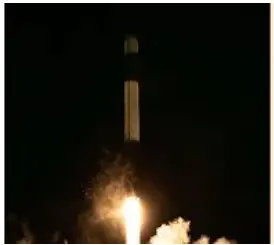
The Significance of Measuring Heat Emissions at Earth’s Poles
- Understanding Earth’s Energy Budget
- Measuring heat emissions at Earth’s poles is crucial for comprehending the Earth’s energy budget.
- The Earth's energy budget is the balance between incoming heat from the Sun and outgoing heat from Earth into space.
- This balance determines the planet's temperature and climate.
- Current Limitations in Measuring Heat Radiation
- A significant amount of heat from the Arctic and Antarctica is emitted as far-infrared radiation, which has wavelengths of 3 μm to 1,000 μm.
- Presently, there is no method to measure this type of energy, creating a knowledge gap in understanding the planet’s energy budget.
CubeSats: An Overview
- Design and Configuration
- CubeSats are miniature satellites with a basic design of a 10 cm x 10 cm x 10 cm cube, referred to as "one unit" or "1U."
- Each unit weighs no more than 1.33 kg.
- CubeSats can be configured in various sizes, including 1.5, 2, 3, 6, and 12U, depending on their mission.
- Origins and Development
- CubeSats were developed in 1999 by California Polytechnic State University at San Luis Obispo (Cal Poly) and Stanford University as educational tools.
- Their low cost and reduced mass make them suitable for technology demonstrations, scientific research, and commercial purposes.
The PREFIRE Mission CubeSats
- Mission Details
- Each PREFIRE satellite is a 6U CubeSat, measuring approximately 90 cm in height and nearly 120 cm in width with deployed solar panels.
- These panels provide the necessary power for the satellite's operations.
- Distinction from SmallSats
- Small spacecraft (SmallSats) are those with a mass less than 180 kilograms, comparable to the size of a large kitchen fridge.
- SmallSats vary in size and mass, categorized as:
- Minisatellite: 100-180 kilograms
- Microsatellite: 10-100 kilograms
- Nanosatellite: 1-10 kilograms
- Picosatellite: 0.01-1 kilogram
- Femtosatellite: 0.001-0.01 kilogram
The PREFIRE Mission: Objectives and Importance
- Mission Objectives
- Two PREFIRE satellites will be placed in a near-polar orbit at an altitude of about 525 kilometers.
- Their mission is to measure the heat radiated into space by the Arctic and Antarctica to understand how this radiation influences the planet’s climate.
- Mission Overview
- The PREFIRE mission aims to study far-infrared radiation from Earth's poles using CubeSats.
- Data collected will enhance understanding of the planet's energy budget and measure far-infrared radiation trapped by atmospheric water vapor and clouds at the poles, influencing the greenhouse effect in the region.
- Equipment and Technology
- Each PREFIRE CubeSat is equipped with a Thermal Infrared Spectrometer (TIRS).
- This instrument measures the amount of infrared and far-infrared radiation emitted from the Arctic and Antarctica.
- The spectrometer's specially shaped mirrors and detectors split and measure infrared light, providing detailed data for analysis.
- Importance of the Mission
- Observations from the PREFIRE mission will deepen our understanding of Earth’s heat balance.
- This knowledge will improve predictions about changes in ice, seas, and weather due to global warming.
Source: IE
INS Kiltan
In News: Upon its arrival at Muara, Brunei, Indian Naval Ship Kiltan received a warm welcome from the Royal Brunei Navy.
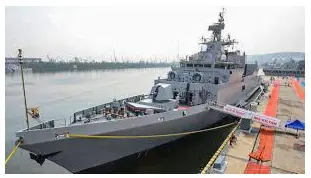
Overview of INS Kiltan
- INS Kiltan is an indigenous anti-submarine warfare stealth corvette, which is the third vessel of the four Kamorta-class corvettes constructed under Project 28.
- The ship is named after one of the islands in the Aminidivi group of the strategically located Lakshadweep and Minicoy group of islands.
- Designed by the Indian Navy’s in-house organisation Directorate of Naval Design, it was built by Garden Reach Shipbuilders & Engineers (GRSE) in Kolkata.
- It is notable for being India’s first major warship to feature a superstructure made of carbon fibre composite material, resulting in enhanced stealth capabilities, reduced top weight, and maintenance costs.
- INS Kiltan is equipped with a predominantly indigenous cutting-edge weapons and sensors suite, including heavyweight torpedoes, ASW rockets, a 76 mm caliber Medium Range gun, and two multi-barrel 30 mm guns serving as a close-in-weapon system (CIWS) with dedicated fire control systems.
- Additionally, it is outfitted with missile decoy rockets (Chaff), an advanced Electronic Support Measure (ESM) system, the most advanced bow-mounted sonar, and an air surveillance radar.
Source: TH
Article 329(b)
In News: Recently, the Election Commission (EC) invoked Article 329(b) of the Constitution, which bars judicial interference in the functioning of the commission during ongoing electoral processes.
- Article 329(b) in the Indian Constitution
- Part XV of the Constitution, encompassing articles 324-329, is dedicated to elections.
- Article 324 grants the Election Commission powers to direct and regulate elections.
- Article 329, comprising two clauses, addresses the judiciary's role in electoral affairs.
- Article 329(a)
- States that the judiciary cannot challenge the constitutionality of laws concerning electoral district boundaries or seat allocations.
- Article 329(b)
- Amended by the Constitution (19th Amendment) Act, 1966.
- Specifies that no election to either House of Parliament or State Legislature can be disputed except through an election petition presented as per laws enacted by the appropriate Legislature.
- Legal Provisions
- Election-related disputes are exclusively handled through election petitions presented according to laws enacted by the Legislature.
- The Representation of the People Act, 1951, authorizes high courts to hear and decide election petitions.
- Decisions from these petitions can be appealed to the Supreme Court.
- Supreme Court Interpretations
- In the 1952 Ponnuswamy judgment (Ponnuswamy v. Returning Officer Namakkal), the SC defined "election" in Article 329(b) as the entire electoral process from notification to result declaration, barring court interference.
- The SC, in K. Venkatachalam vs. A. Swamickan (1999), ruled that Article 329(b) does not apply to matters under Articles 191 and 193, which address disqualifications and penalties related to parliamentary and legislative assembly memberships.
Source: TP
Oedocladium sahyadricum
In News: A new algal species has been discovered in the Western Ghats by a team of phycologists from the Department of Botany at Catholicate College in Pathanamthitta.
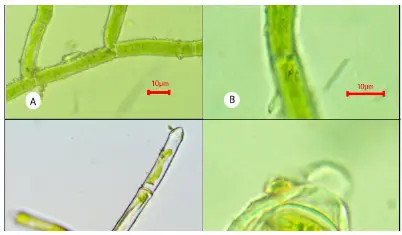
Discovery and Features of Oedocladium sahyadricum
- Oedocladium sahyadricum is a newly discovered algal species named after the Western Ghats, also known as Sahyadri, due to its rich plant diversity and favorable conditions for terrestrial microalgae growth.
- This species is dioecious and terrestrial, featuring a superior operculum, ellipsoid oogonium, and oospore.
- It was found as a thin mat of elongated strands on damp soil, resembling moss protonema, and exhibits a velvety green appearance that turns yellowish-green as it matures, with abundant growth likely requiring rainy weather.
- This discovery marks the first recorded instance of a species in the Oedocladium category in Kerala.
- Species of Oedocladium show promising practical applications in various fields including medicine, agriculture, and the production of astaxanthin, a natural pigment known for its unique biological activities and health benefits.
- Algae, including Oedocladium sahyadricum, play crucial roles in ecosystems and possess significant economic importance in the global market, contributing to the production of high-value products and wastewater treatment.
Source: TH
Astronomical Transients
In News: In 2024, Indian-American astronomer Shrinivas Kulkarni was honored with the Shaw Prize for Astronomy for his groundbreaking contributions to understanding the physics behind astronomical transients.
Understanding Astronomical Transients
- In astronomy, a celestial object is termed a 'transient' if its brightness undergoes rapid changes within short periods.
- Various types of astronomical transients exist, all characterized by violent phenomena to some degree.
- Astronomers investigate transients to comprehend the origins of their violence and gain insights into non-transient events.
- Examples of Transients:
- Supernovae occur when the outer layers of massive stars explode while their cores collapse due to the depletion of fusionable elements. Some supernovae can outshine the combined light of all other stars in their host galaxies.
- Active Galactic Nuclei (AGN) are found at the centers of massive galaxies, where supermassive black holes reside. Occasionally, these black holes actively consume surrounding matter, causing it to emit varying levels of brightness due to energetic interactions.
- Fast Radio Bursts (FRBs), discovered in 2007, release more than ten times the energy of the Sun within milliseconds, emitting powerful bursts of radio waves.
Source: TH
Eucalyptus
In News: In 2024-2025, the Kerala government has issued an order permitting the Kerala Forest Development Corporation (KFDC) to cultivate eucalyptus trees as a means of ensuring its financial sustainability.
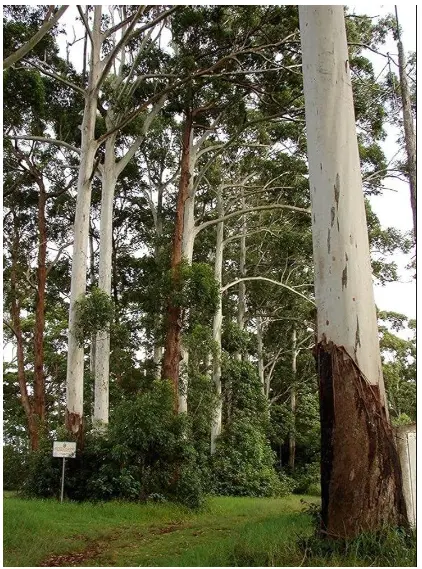
Overview and Uses of Eucalyptus
- Eucalyptus is a large genus comprising more than 660 species of shrubs and tall trees belonging to the myrtle family (Myrtaceae).
- Some of the tallest trees globally are eucalypti.
- Native to Australia, Tasmania, and nearby islands, eucalypti are commonly referred to as gum trees or stringybark trees in Australia.
- Many species are extensively cultivated worldwide as shade trees or in forestry plantations.
Features
- Eucalyptus trees are characterized by gum-infused bark, long stems, and circular leaves that can be difficult to digest if eaten whole.
- They bear small flowers in various colors, including white, yellow, and shades of red, along with small woody capsules containing seeds.
Uses
- Widely recognized for its medicinal properties, some eucalyptus leaves contain oil with a potent aroma.
- Eucalyptus oil, primarily composed of cineole or eucalyptol, along with flavonoids and tannins, acts as anti-inflammatory and antioxidants, making it useful in treating various ailments.
- It is particularly effective in relieving congestion and aiding breathing during colds, and as a pain reliever for sore muscles, aching joints, and rheumatism, improving blood circulation.
- Eucalyptus wood is tough and durable, often utilized in the construction of furniture and fences.
Eucalyptus Plantations in India
- In India, Eucalyptus tereticornis and Eucalyptus hybrid are the most commonly planted species.
- These plantations are widespread in regions such as Tamil Nadu, Andhra Pradesh, Gujarat, Haryana, Mysore, Kerala, and the Nilgiri Hills.
- Eucalyptus thrives in deep, fertile, well-drained loamy soil with sufficient moisture.
Source: TH
Zimbabwe Gold (ZiG) Currency
In News: In a recent effort to tackle its persistent economic instability, the Reserve Bank of Zimbabwe (RBZ) has unveiled a new gold-backed currency known as the ZiG.
Introduction of Zimbabwe Gold (ZiG) Currency
- Zimbabwe has recently introduced the Zimbabwe Gold (ZiG) currency, which is backed by gold reserves, making it the sixth currency utilized by the country.
- ZiG has been in circulation since April 5, 2024, and aims to provide stability and prevent currency devaluation through its gold-backed nature.
Key Features of ZiG
- The ZiG is distinguished as a novel currency backed by gold reserves, ensuring its value is supported by physical gold held by the government.
- Denominations of ZiG notes and coins range from 1ZiG to 200ZiG, with the gold backing intended to offer stability and prevent currency devaluation.
Reasons for Launching the New Currency
- Zimbabwe has struggled with high inflation rates, exceeding 500% in recent years, leading to the devaluation of the Zimbabwean dollar introduced in 1980.
- Hyperinflation, reaching extreme levels such as 5 billion per cent in 2009, resulted in the collapse of the Zimbabwean dollar, prompting reliance on various foreign currencies, predominantly the US dollar.
- The introduction of the ZiG currency aims to address these challenges, with banks in Zimbabwe converting the previous national currency into ZiGs, aiming to streamline monetary and financial processes while promoting simplicity, certainty, and predictability.
Source: IE
The Time is Ripe for Electoral Bond Reform
In News: The recent ruling by the Supreme Court, which invalidated the electoral bonds scheme, has provided opposition parties with a significant opportunity to elevate it as a critical issue during the ongoing parliamentary election campaign.
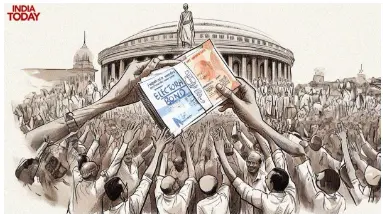
Addressing the Imperative for Transparency and Reform
- The imperative for transparency and reform has been underscored both by the Supreme Court's rulings and by the prevailing public sentiment, emphasizing the urgent need to curtail the prevalence of untraceable funds within political circles.
- As awareness among the public regarding the operational methods and financial resourcing of political entities continues to burgeon, it presents a ripe occasion for the government to enact substantive reforms.
- The ensuing proposals are geared towards mitigating the concerns surrounding the operational and monetary aspects of political parties.
Reforms in Political Party Functioning
- Recognition as Public Bodies: It is proposed that political parties should be recognized as public bodies under the Constitution. Consequently, they should be brought under the purview of the Right to Information Act to ensure transparency.
- Institutional Regulation: The establishment of a National Commission for Political Parties, akin to the Election Commission of India (ECI), is advocated. This commission would regulate all aspects of political parties, allowing the ECI to focus solely on conducting elections.
- Non-secular nature: A prerequisite for registration should be that political parties must not indicate a non-secular nature in their names.
- Secular and Democratic Principles: Political parties should be mandated to operate on secular and democratic principles. Additionally, there should be limited tenures for elected office-bearers to foster inclusivity and prevent the consolidation of power.
- Annual Audits: It is suggested that the accounts of political parties undergo annual audits, with the results being made public for transparency purposes.
Funding Reforms
- Transparency in Donations: Complete transparency regarding donors and recipients is deemed essential. To achieve this, all donations should be made through banking channels, and details of each transaction should be reported to the National Commission for Political Parties.
- Tax Incentives and Liabilities: Political parties should not incur tax liabilities on donations received. Conversely, donors should receive a 100% tax rebate on their contributions. However, to deter the use of cash donations, such contributions should be subject to heavy taxation.
- Income Tax Returns: Irrespective of tax liability, political parties should be obligated to file income tax returns.
- Donation Limits: A donation cap should be imposed to prevent any single donor from contributing more than 20% of their average net profits over the previous three years to political parties. Additionally, donors must report all their contributions to the National Commission for Political Parties.
- Sector-Specific Norms: Donors from tax-exempt sectors, such as agriculture, should channel their donations through banking channels. Norms for such donations should be set by the government based on the respective sector's holdings.
- Auditing Powers: The National Commission should possess the authority to audit the accounts of any political party, if deemed necessary, utilizing the services of the Comptroller and Auditor General (CAG).
Public Consultation and Implementation
- The central government should engage in soliciting public comments on the proposed policy for funding political parties before finalizing it.
- This approach aims to minimize legal challenges and ensure that the policy resonates with public expectations and interests.
Conclusion
The implementation of these reforms holds the potential to enhance the transparency and accountability of political parties, thereby fortifying the democratic process in India. Public support for these measures is imperative, and it is anticipated that many enlightened politicians would endorse these suggestions as they ultimately serve to bolster public trust in their respective parties.
Source: DH
Share the article
Edukemy’s Current Affairs Quiz is published with multiple choice questions for UPSC exams
MCQ
Get Latest Updates on Offers, Event dates, and free Mentorship sessions.

Get in touch with our Expert Academic Counsellors 👋
FAQs
UPSC Daily Current Affairs focuses on learning current events on a daily basis. An aspirant needs to study regular and updated information about current events, news, and relevant topics that are important for UPSC aspirants. It covers national and international affairs, government policies, socio-economic issues, science and technology advancements, and more.
UPSC Daily Current Affairs provides aspirants with a concise and comprehensive overview of the latest happenings and developments across various fields. It helps aspirants stay updated with current affairs and provides them with valuable insights and analysis, which are essential for answering questions in the UPSC examinations. It enhances their knowledge, analytical skills, and ability to connect current affairs with the UPSC syllabus.
UPSC Daily Current Affairs covers a wide range of topics, including politics, economics, science and technology, environment, social issues, governance, international relations, and more. It offers news summaries, in-depth analyses, editorials, opinion pieces, and relevant study materials. It also provides practice questions and quizzes to help aspirants test their understanding of current affairs.
Edukemy's UPSC Daily Current Affairs can be accessed through:
- UPSC Daily Current Affairs can be accessed through Current Affairs tab at the top of the Main Page of Edukemy.
- Edukemy Mobile app: The Daily Current Affairs can also be access through Edukemy Mobile App.
- Social media: Follow Edukemy’s official social media accounts or pages that provide UPSC Daily Current Affairs updates, including Facebook, Twitter, or Telegram channels.

